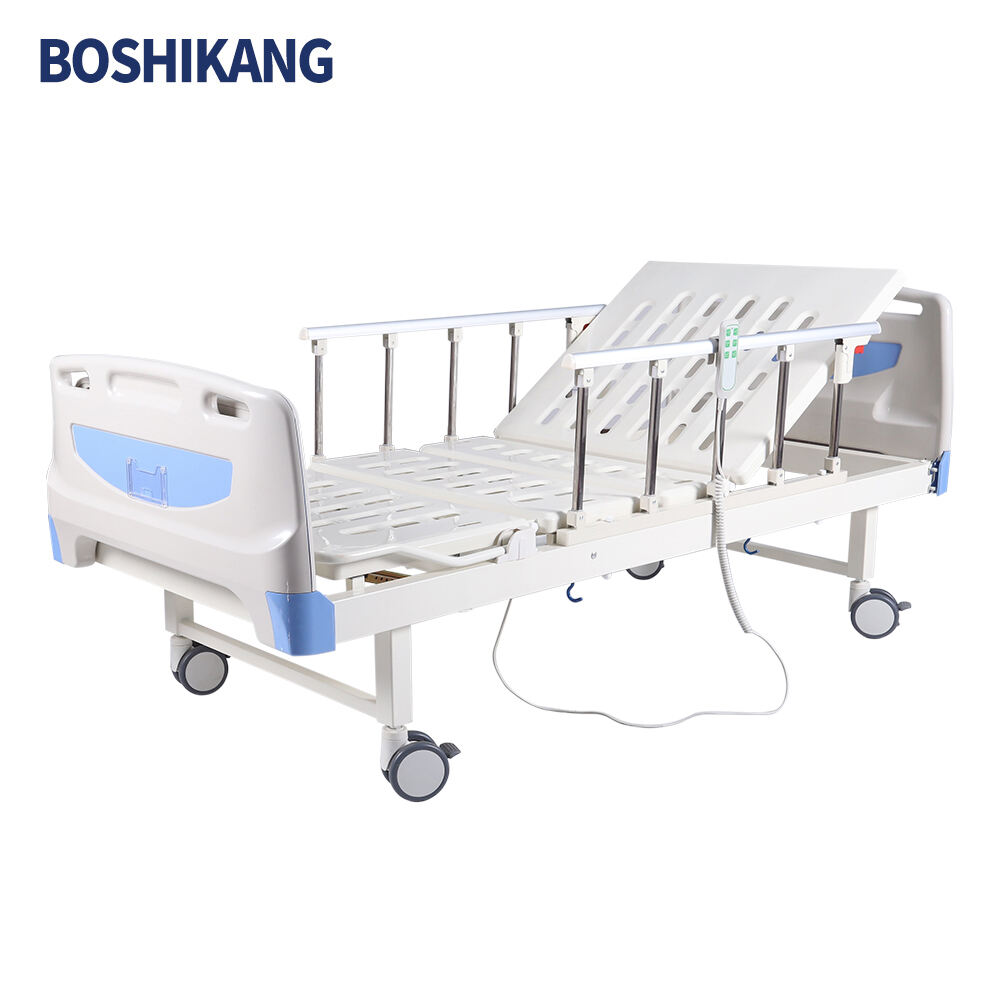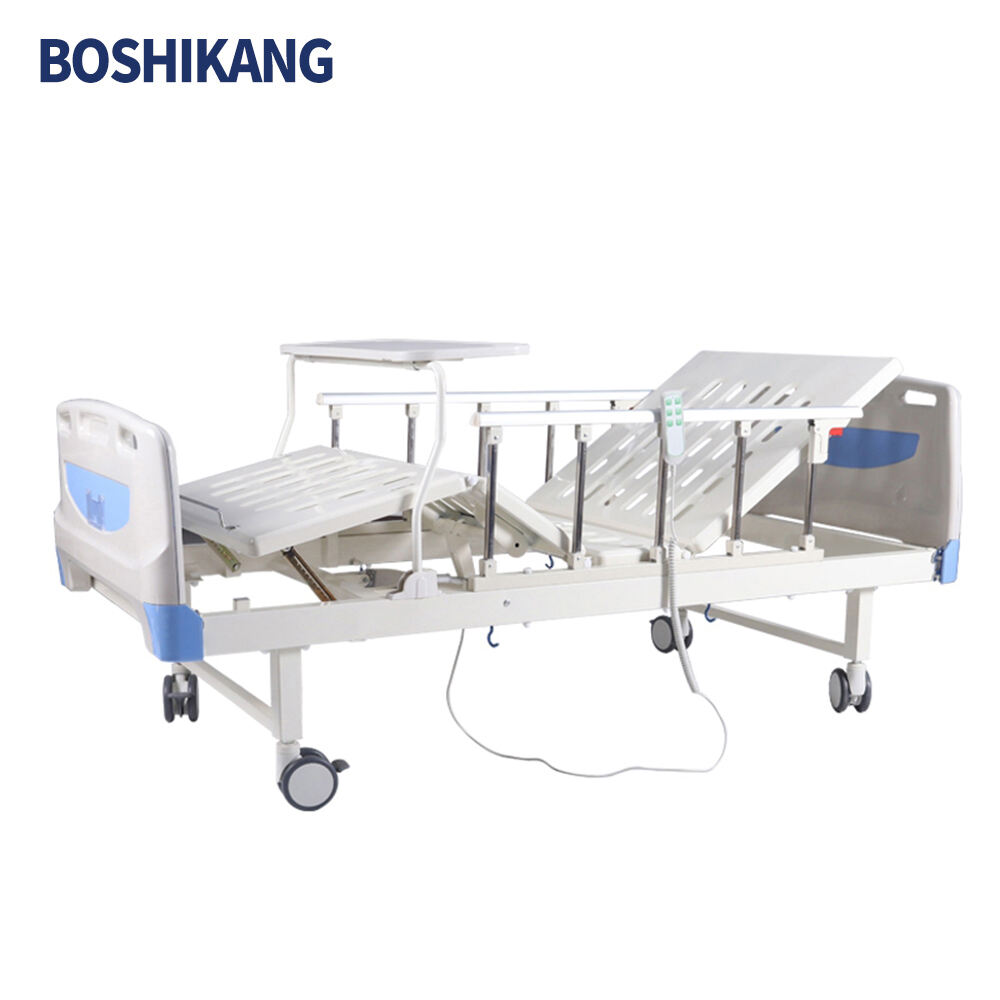Understanding the Essential Components of Modern Hospital Beds
Hospital beds are sophisticated pieces of medical equipment that play a crucial role in patient care and recovery. These specialized beds comprise numerous hospital bed parts working together to ensure patient comfort, safety, and optimal care delivery. From powerful motors that enable smooth position adjustments to secure side rails and intuitive control systems, each component serves a specific purpose in enhancing the healthcare experience.
Modern hospital beds have evolved significantly from their basic predecessors, incorporating advanced technology and ergonomic design principles. Healthcare facilities rely on these beds to provide comprehensive patient support while facilitating the work of medical professionals. Understanding the various components and their functions is essential for healthcare providers, maintenance staff, and facility managers.

The Power Behind Movement: Hospital Bed Motors and Actuators
Electric Motors and Their Functions
At the heart of every modern hospital bed lies a system of electric motors that enable various positioning capabilities. These motors are typically DC-powered units designed for quiet operation and precise control. The main motor system usually includes separate actuators for head elevation, foot adjustment, and height control. These hospital bed parts work in harmony to achieve smooth, controlled movements that prevent patient discomfort during position changes.
High-quality motors feature thermal protection, emergency backup systems, and precise speed control mechanisms. They are engineered to handle frequent adjustments throughout the day while maintaining consistent performance and reliability. The motor system's design also incorporates safety features that prevent overload and ensure gentle deceleration at the end of each movement range.
Actuator Systems and Movement Mechanisms
The actuator system translates the motor's power into practical bed movements. Linear actuators are commonly used hospital bed parts that convert rotary motion into linear movement, enabling the raising and lowering of different bed sections. These actuators are strategically positioned to provide optimal leverage while maintaining the bed's stability during adjustments.
Modern actuator systems often include advanced features such as synchronized movement, position memory, and emergency manual override capabilities. The integration of these components allows for precise articulation of the bed's surface, supporting various medical procedures and patient positioning requirements.
Safety Features: Side Rails and Protective Elements
Side Rail Design and Operation
Side rails are critical hospital bed parts that prevent patient falls while allowing easy access for medical staff. Modern designs feature split-rail systems that can be independently lowered or raised, providing flexibility in patient care. The rails incorporate smooth-gliding mechanisms and secure locking systems to ensure reliable operation and patient safety.
Advanced rail designs also include integrated controls, storage options, and ergonomic grip points. These features enhance functionality while maintaining compliance with safety regulations and standards. The materials used in side rail construction combine durability with ease of cleaning, supporting infection control protocols.
Protective Bumpers and Corner Guards
Protection against impact and wear is provided by strategically placed bumpers and guards. These hospital bed parts shield both the bed and facility walls from damage during transportation and repositioning. High-grade materials are used to ensure long-lasting protection while maintaining an aesthetic appearance that complements the healthcare environment.
Corner guards are specifically designed to absorb impact while providing visual cues for bed positioning. These components often integrate with the bed's overall design to maintain a cohesive appearance while serving their protective function.
Control Systems and User Interfaces
Patient Control Interfaces
User-friendly control interfaces are essential hospital bed parts that empower patients to adjust their position independently. Modern control panels feature clear, intuitive buttons with tactile feedback and backlighting for nighttime use. These interfaces are designed to be easy to clean and resistant to fluid ingress, meeting healthcare hygiene standards.
Advanced control systems may include preset positions, lockout features for specific functions, and nurse call integration. The positioning of these controls is carefully considered to ensure easy access while preventing accidental activation.
Staff Control Panels and Features
Healthcare providers require additional control options to manage patient care effectively. Staff control panels include advanced functions such as Trendelenburg positioning, cardiac chair configuration, and bed exit monitoring. These specialized hospital bed parts are typically located at the foot end of the bed for convenient access during patient assessment and care delivery.
Modern staff controls often incorporate digital displays showing bed status, patient weight, and angle measurements. Integration with hospital information systems allows for data logging and monitoring of bed utilization and maintenance requirements.
Weight Management and Support Systems
Load Cells and Weight Monitoring
Integrated weight measurement systems are sophisticated hospital bed parts that enable continuous patient monitoring without transfers. Load cells positioned at key points in the bed frame provide accurate weight readings while compensating for bed accessories and position changes. This technology supports medical staff in tracking patient condition and medication dosing requirements.
Advanced weight monitoring systems include features such as automatic data recording, trend analysis, and alert capabilities for significant weight changes. The accuracy and reliability of these systems make them valuable tools in patient care management.
Frame Support and Stability Features
The bed frame and support structure incorporate various hospital bed parts designed to ensure stability and durability. Heavy-duty casters with central locking systems provide secure positioning and easy maneuverability. The frame design distributes weight evenly while maintaining structural integrity under various load conditions.
Support systems include reinforced pivot points, precision bearings, and anti-sag mechanisms that maintain mattress platform alignment. These components work together to provide consistent support throughout the bed's range of motion.
Frequently Asked Questions
How often should hospital bed parts be inspected and maintained?
Regular maintenance inspections should be conducted quarterly, with daily visual checks by staff. Critical components like motors and safety features should undergo detailed inspection every six months. Following manufacturer guidelines for preventive maintenance helps ensure optimal performance and longevity.
What are the most common hospital bed parts that require replacement?
The most frequently replaced components include control handsets, side rail bumpers, and caster wheels. These parts experience regular wear from daily use. Motors and actuators typically have longer service lives but may require replacement after several years of continuous operation.
How can healthcare facilities ensure compatibility when replacing hospital bed parts?
Facilities should maintain detailed records of bed models and serial numbers, working directly with authorized manufacturers or suppliers for replacement parts. Using OEM-approved components ensures proper fit and function while maintaining warranty coverage and regulatory compliance.
What safety certifications should hospital bed parts meet?
All components should comply with IEC 60601-2-52 standards for medical electrical equipment. Additionally, parts should meet specific regional healthcare safety regulations and be certified for use in medical environments. Documentation of compliance should be maintained for all replacement parts.


